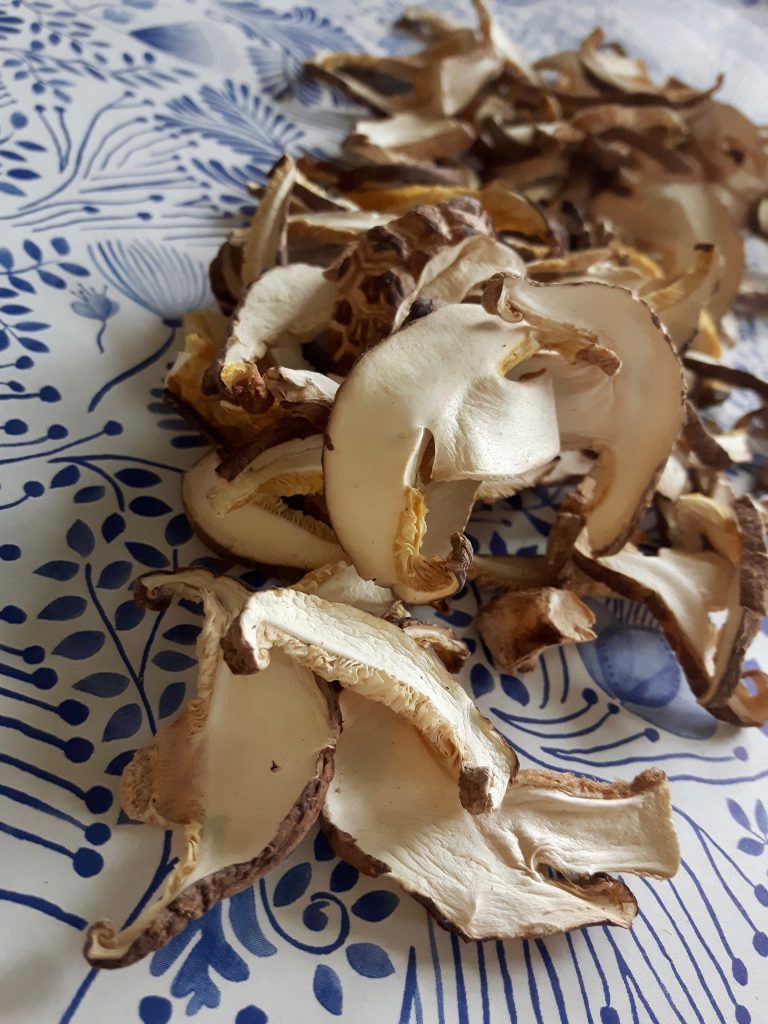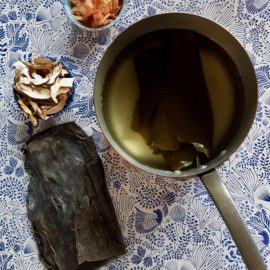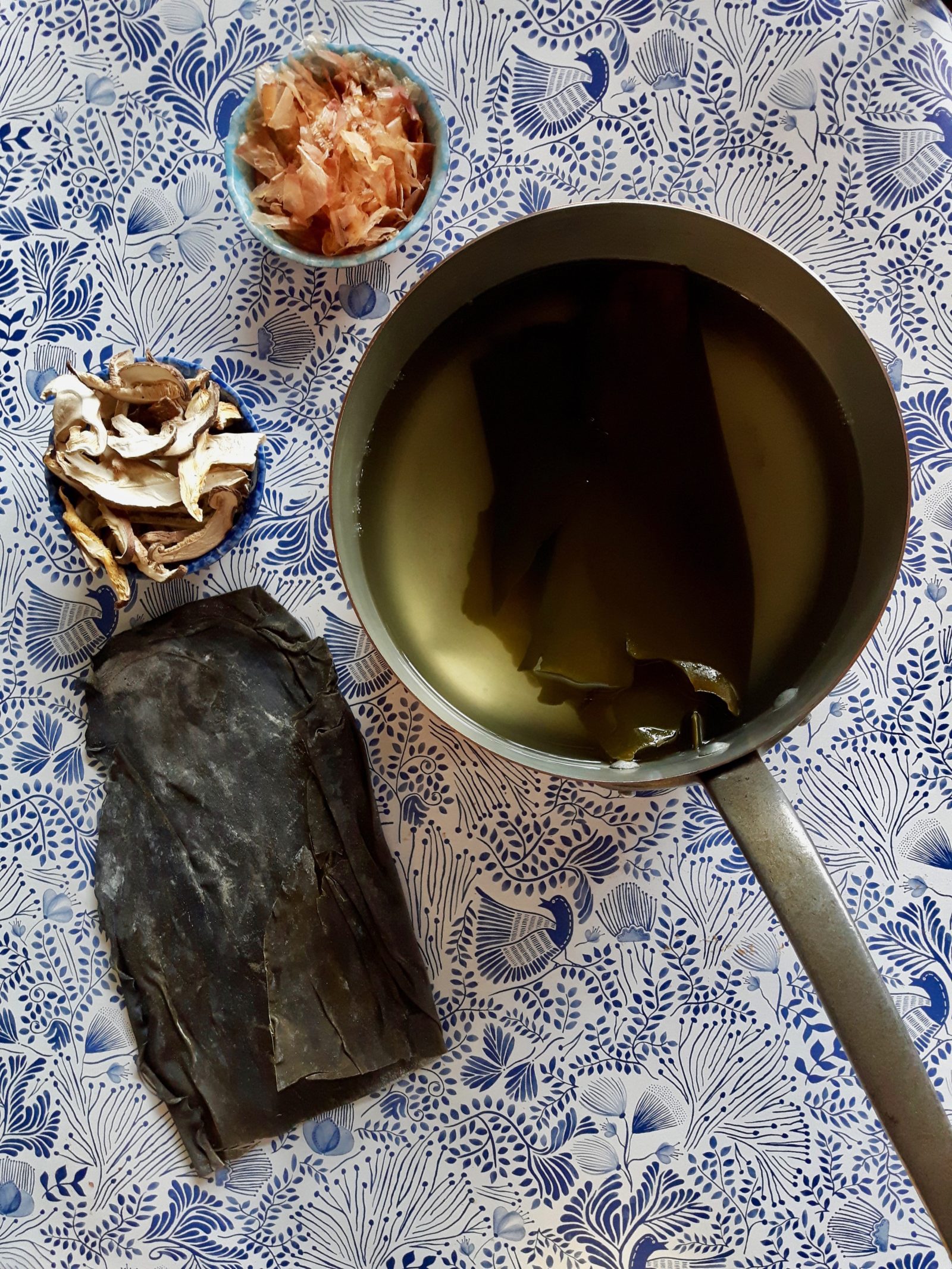Dashi is a Japanese stock made most commonly from kombu, a variety of kelp that grows across Japan. Dashi apart from being an essential part of Japanese cuisine is also the essence of Umami, the fifth taste also known as savory. There are numerous types of dashi that differ regionally, such as Kombu Dashi, a dashi simply made from kombu or Shojin Dashi, a type of “Temple Food” developed by Zen Buddhist monks as a way to pursue a perfect state of mind, made from kombu and dried shiitake mushrooms. Both kombu and shojin dashi are examples of vegan or vegetarian dashi.

Shojin dashi brings a wonderful depth of flavor to soups, sauces and other dishes, it is easy and quick to make and surprisingly nourishing. Shiitake mushrooms are a great source of copper, pantothenic acid, selenium and vitamin B2, as well as zinc, manganese and vitamin D, were as kombu provides amino acids, probiotics, and savory flavor.


Shojin Dashi
Ingredients
- 10 g Kombu
- 2 litre water
- 150 g dried Shiitake Mushrooms.
Instructions
- Place the Kombu and 1 litre of water into a jar with a lid or leave it in the pot you will be used later with a lid on top to cover it. Let it sit at room temperature for no less than 30 minutes or overnight on the counter or in the fridge (Best left overnight). It should not be left in a hot place.
- Add the dried shiitake mushrooms to the other 1 litre of water. Let them dehydrate. This may vary on how dried the mushroom is, but somewhere between 3 hours to overnight. They can be left on the counter.
- Place the kombu and the water into a pot, if you have not already done so. Place the pot on a stove heater at medium to medium-low.
- You want to slowly heat up the stock. When it is about to come to a boil, quickly remove the kombu from the pot. If the kombu is overcooked it becomes slimy and will result in a slimy and bitter stock.
- Once the kombu has been removed add in the shiitake mushrooms. Let the stock come to a gentle boil and let the mushrooms cook for a few minutes.
- Turn off the heat and strain the stock.
- You now have Shojin Dashi. You can store it in the fridge, freeze it for later or make miso soup.
Nutrition
Amanda Filipowicz is a certified nutritional practitioner (CNP) with a bachelor in environmental studies (BES) from York University. She also has certification in clinical detoxification, prenatal and postnatal care as well as nutrition for mental health. She has been working as a nutritionist since 2013 and is a lifelong proponent of eating healthy.

